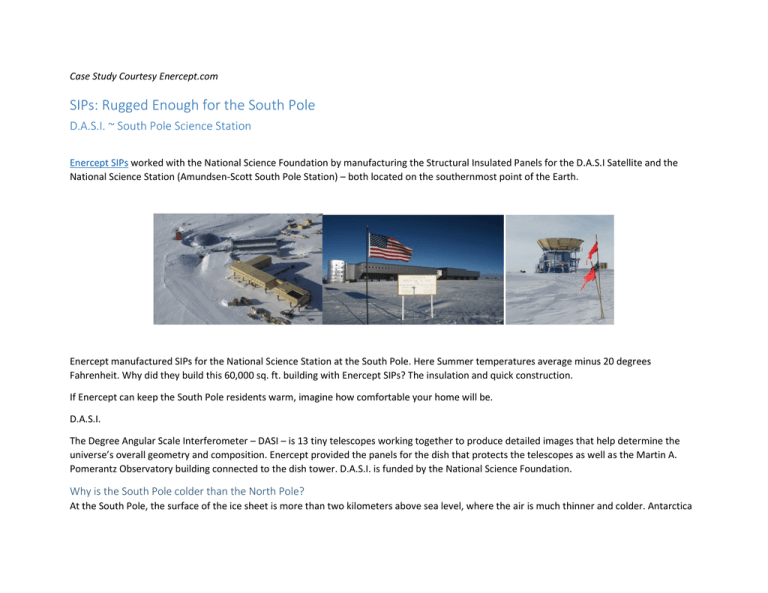SIPs: Rugged Enough for the South Pole
advertisement

Case Study Courtesy Enercept.com SIPs: Rugged Enough for the South Pole D.A.S.I. ~ South Pole Science Station Enercept SIPs worked with the National Science Foundation by manufacturing the Structural Insulated Panels for the D.A.S.I Satellite and the National Science Station (Amundsen-Scott South Pole Station) – both located on the southernmost point of the Earth. Enercept manufactured SIPs for the National Science Station at the South Pole. Here Summer temperatures average minus 20 degrees Fahrenheit. Why did they build this 60,000 sq. ft. building with Enercept SIPs? The insulation and quick construction. If Enercept can keep the South Pole residents warm, imagine how comfortable your home will be. D.A.S.I. The Degree Angular Scale Interferometer – DASI – is 13 tiny telescopes working together to produce detailed images that help determine the universe’s overall geometry and composition. Enercept provided the panels for the dish that protects the telescopes as well as the Martin A. Pomerantz Observatory building connected to the dish tower. D.A.S.I. is funded by the National Science Foundation. Why is the South Pole colder than the North Pole? At the South Pole, the surface of the ice sheet is more than two kilometers above sea level, where the air is much thinner and colder. Antarctica is, on average, the highest continent on the earth. However, the floating ice surface at the North Pole is only a foot or so above sea level. The Arctic Ocean, at the North Pole, acts as a heat reservoir, warming the cold atmosphere above it in the winter and drawing heat from the atmosphere in the summer. Aerial view of SIPs being installed on the National Science Station – notice the “Dome” in the background. A key feature in the new building is that it can be lifted over time to avoid being drifted in. For more information about the Amundsen-Scott South Pole Station and the work done there visit The National Science Foundation website.





